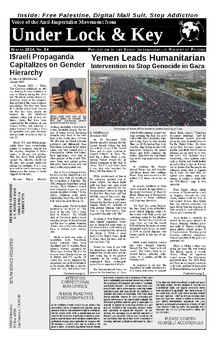
Protest at New Jersey State Prison
Prisoners at New Jersey State Prison, the only maximum security facility in the state, staged a non-violent protest June 6 through 8, 2013. Initially, prisoners on the West Compound, the older part of the prison, and one of the oldest in the nation, functioning since 1830, refused to go to the mess hall for the entire day. Despite some lack of cooperation at the breakfast movement, the mess hall finally remained empty at dinner time. The next two days the modern North and South compounds of the prison joined in the protest, bringing the institution to a complete standstill.
The protest came as a consequence of several factors. First was the issue of collective punishment. The prison administrator issued an official memorandum in which he threatened to suspend recreation and privileges to entire wings of any individual prisoner who had committed a serious offense (a common occurrence on a prison that houses close to 2000 people).
Ancillary issues involved the harassment of people at the central rotunda, a place of obligatory pass for any activities, including meals, recreation, education and religious programs. The officers, with little supervision, or perhaps encouraged by supervisors, overtly harass inmates, many times without probable cause, as demanded by the Constitution of the United States, the Constitution of New Jersey, and affirmed by the 10A Code that regulates prisons in the state. Prisoners are stripped searched at the mere whim of any guard. Made up charges that lead to lock-up time are usually the result of such harassment.
The last issue that weighed on the decision to stage a non-violent protest relates to the abusive language and arbitrary searches conducted by a second shift sergeant. Sometimes, the results are outright sad and curious, i.e., the same shank found in several cells by the same sergeant.
In conclusion petty management practices, abuse of power by supervisors, lack of concern by the administrator and superintendent (supervision from an Ivory Tower), collective punishment, and indiscriminate use of lock-up as an instrument of control, led the prison community to unite as one to express their concerns.
It is important to highlight that the prison, at any given time, keeps an estimated 750 inmates on closed custody units such as 1-Left lock-up, Ad-Seg, MCU (Management Control Unit), and P.C. (Protective Custody) — a full 38% of the prison population. More than one in three prisoners are kept in solitary confinement.
Although nothing has changed as of the writing of this report, it is important to highlight that the level of unity achieved across nations and groups, the effective organization of the protest, and the fearful response by the state demonstrate the power of non-violent resistance in a corrections environment. During the demonstration the prison was militarized by SAG, the special operations response team of the DOC, hundreds of officers were summoned to work, and all administration had to report to work. It is presumable that the cost of overtime hours, and the emotional cost of an oppressive power challenged by the masses will affect the way in which future decisions are made by the administration. A group of prisoners were transferred to other facilities across the state, some others placed in solitary confinement. As it usually happens, most were not organizers of the protest.








